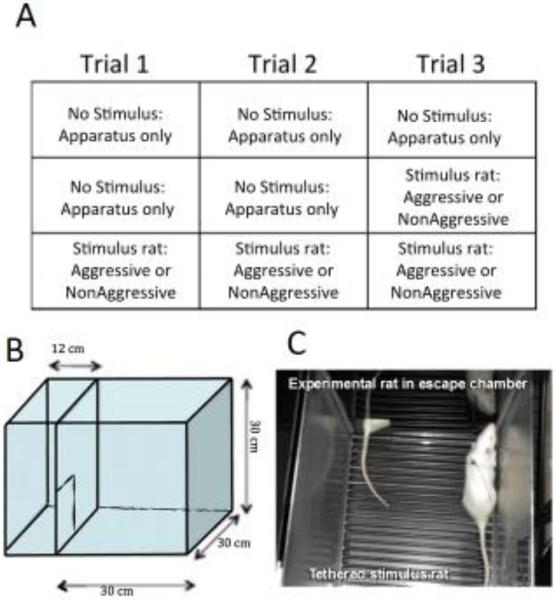Figure 1.
The escapable social interaction test experimental design and apparatus. All rats were exposed to the apparatus for 3 trials, with either none of the trials, the last trial, or all 3 trials with a tethered stimulus rat that was either aggressive or non-aggressive (A). The apparatus consisted of 2 chambers, a larger social interaction chamber and a smaller escape chamber, separated by a door (B). In social trials the social interaction chamber contained a tethered stimulus rat that could not enter the escape chamber; the experimental rats had free access to the entire chamber (C).

